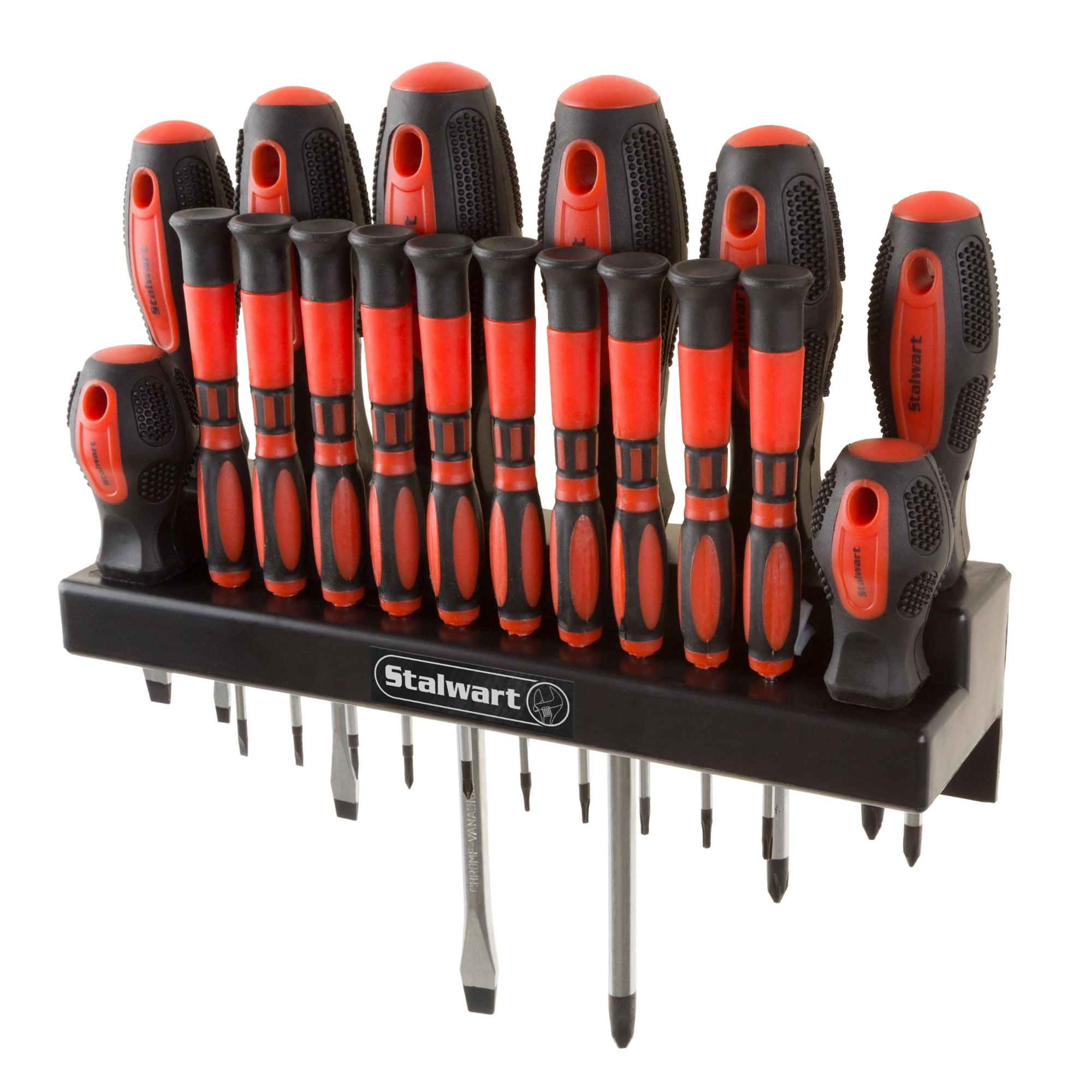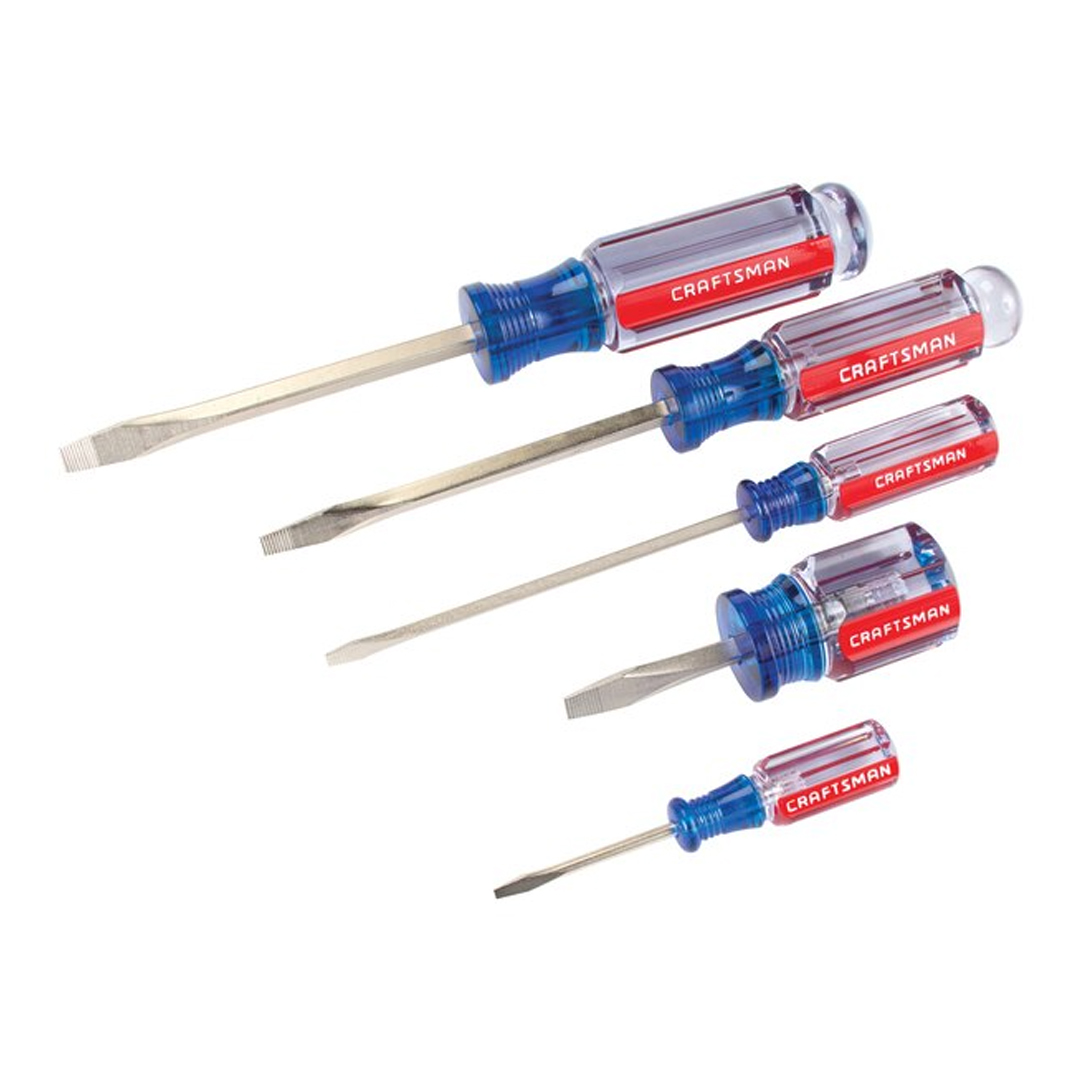
Mastering the Art of Repair: The Essential Guide to Flat Screwdriver
Introduction to Flat Screwdrivers
A flat screwdriver is a must-have tool in any toolkit. It’s versatile, easy to use, and ideal for countless tasks. It features a handle and a flat tip blade. The blade fits into the slot of a screw head to turn it. Flat screwdrivers come in various sizes and materials. This makes them suitable for precision work to heavy-duty tasks. In this guide, we’ll discuss the important aspects of flat screwdrivers. This includes the types, sizes, materials, handle designs, and more. Understanding these will help you make an informed choice when selecting the right flat screwdriver for the job. Whether you’re a professional tradesperson or a DIY enthusiast, finding the right tool is key. Let’s dive into the world of flat screwdrivers and explore how to choose the best one for your needs.
Types of Flat Screwdrivers
When seeking the perfect flat screwdriver, know that they come in various types. Each type serves a specific purpose and caters to different tasks. Let’s look at the common styles you’ll find in the market:
- Standard Flat Screwdrivers: The most common kind, used daily by professionals and hobbyists alike. Their straight blade fits into single-slot screws.
- Cabinet Screwdrivers: These have a thinner shank that allows access to recessed screws, such as those in cabinet hardware.
- Electrician’s Screwdrivers: Designed with insulation to protect against electric shock, making them ideal for electrical work.
- Stubby Screwdrivers: Short and compact, these are perfect for tight spaces where a regular screwdriver cannot reach.
- Precision Screwdrivers: Small and narrow, precision screwdrivers are used for delicate tasks, such as repairing electronics or eyeglasses.
- Mechanic’s Screwdrivers: Tough and with a square blade, they’re made to apply high torque for automotive or heavy machinery tasks.
Knowing the type of flat screwdriver required for your project is crucial. Choosing correctly ensures efficiency and safety while working. Ensure that your choice aligns with the task at hand to achieve the best results.

Factors to Consider When Choosing a Flat Screwdriver
When it comes to picking out the perfect flat screwdriver, the task might seem simple. Yet, there are several factors you need to weigh in to ensure you’ve got the right tool for the job. From task requirements to handle ergonomics, every detail matters. Here, we’ll break down what to look for when shopping for a flat screwdriver.
Task and Screw Compatibility: First, consider the task you’ll be handling. Different tasks require flat screwdrivers of varying types and sizes. Check for compatibility between the flat screwdriver tip and the screws you’ll work with.
Tip Size and Shape: The tip of the screwdriver should match the slot of the screw head perfectly. If it’s too large or too small, it can damage the screw or the tool itself.
Shank Length and Thickness: The length and thickness of the shank determine accessibility and torque. A longer shank can reach screws in deep recesses, while a thicker one allows for more torque.
Handle Material and Design: Choose a handle that provides comfort and a strong grip. This reduces hand fatigue and increases precision during use. Materials like rubber or plastic are common for their grip-enhancing properties.
Quality of Materials: A flat screwdriver made from quality materials lasts longer and performs better. Steel tips are typically the most durable. Check the material specifications when selecting.
Brand Reputation and Warranty: A reputable brand often means reliability and quality. Look for brands that offer warranties on their tools for added assurance.
Consider these factors carefully when choosing your flat screwdriver. It ensures a good fit for your project and a worthy addition to your toolbox.
Size and Tip Measurements for Flat Screwdrivers
When selecting a flat screwdriver, size and tip measurement are crucial factors. The correct size ensures a snug fit with the screw head. This avoids damage and provides a better driving force. Here’s what you need to consider regarding size and tip measurements:
- Tip Width: The width of the tip should closely match the slot of the screw head. Too wide, and it won’t fit. Too narrow, and it may slip or strip the screw head.
- Blade Thickness: The thickness of the blade should be sufficient to withstand the torque applied. A thin blade can bend or break, especially under high torque.
- Length of the Screwdriver: The total length impacts reach and leverage. Longer screwdrivers can access deep-set screws and provide more leverage, but may be cumbersome in tight spaces.
- Shank Length: Precisely, the length from the handle to the tip determines the screwdriver’s reach. Choose a length that gives you the necessary clearance and control.
When it comes to tip measurements, precision is key. A tip that fits poorly can damage the screw head, making it difficult to remove later. Always measure the screw slot and compare it to the tip size before purchasing a new flat screwdriver.
Remember that the right size and tip measurement will enhance your efficiency and help prevent accidents. Whether you’re working on a simple home repair or a complex project, these considerations will guide you to the right choice. Keep the size and tip measurements in mind to ensure your flat screwdriver is an effective and reliable tool in your toolkit.

Material and Durability of Screwdriver Blades
The material of a flat screwdriver blade deeply impacts its durability and performance. High-quality steel, often chrome vanadium or carbon steel, is the go-to choice for many manufacturers due to its strength and longevity. When selecting a flat screwdriver, it’s essential to assess the blade’s material and how it relates to the tasks you’ll undertake.
Steel Quality: Steel is a standard material due to its ability to resist wear and handle high torque. Look for blades that mention chrome, vanadium, or carbon in their steel blend.
Hardness and Toughness: The blade must be hard enough to resist deforming, yet tough enough to prevent snapping under pressure. A good balance ensures the screwdriver lasts longer.
Corrosion Resistance: Seek out blades with a corrosion-resistant coating, such as chrome plating, as this can extend the tool’s lifespan and make it suitable for harsh environments.
Edge Retention: A blade that maintains a sharp, consistent edge is critical. This ensures that it fits well into screw heads repeatedly, without damaging the screws or slipping.
Prioritize the material and durability of flat screwdriver blades to ensure your tool can withstand the rigor of use over time. A well-crafted blade made from superior material saves you time and money on replacements and delivers a performance you can trust.

Handle Design and Grip Comfort
Choosing the right handle design is critical for overall grip comfort when using a flat screwdriver. Here’s what to consider for maximum comfort and efficiency:
- Ergonomic Design: Look for handles with an ergonomic design. These fit well in hand and reduce strain during long periods of use.
- Material: Handles often come in rubber or plastic. Rubber offers better grip, especially in wet conditions.
- Texture: A textured handle surface can provide additional grip and control.
- Size and Shape: The handle’s size and shape should match your hand to prevent slipping or discomfort.
- Handle End: Some handles have a flared or broad end. This prevents the tool from slipping and gives better turning power.
Comfort in grip assures that you can work longer without fatigue. This is vital for professionals and DIY enthusiasts alike. Avoid hard or poorly shaped handles. They can cause blisters and reduce work accuracy. Good grip also equals safety. It means less chance of the tool slipping and causing injury.
To sum it up, handle design and grip comfort are critical in a flat screwdriver. They make the tool easy and safe to use. Always hold and test a screwdriver’s handle before buying. This ensures it feels right in your grip and meets your needs. A comfortable handle will make a difference in your work quality and experience.

Brand and Quality Considerations
Choosing the right flat screwdriver involves more than just the physical aspects. The brand and overall quality of the tool also play a critical role. Here are key elements to consider:
- Reputation: Look for brands with a strong reputation for quality. Trusted brands often have a history of customer satisfaction.
- Warranty: A warranty assures you that the manufacturer stands behind their product. Select screwdrivers with a solid warranty for peace of mind.
- User Reviews: Check online reviews and ratings. They can provide insights into the screwdriver’s performance and durability in real-world situations.
- Industry Certifications: Certifications can indicate a level of quality and standard compliance. Seek flat screwdrivers that meet industry standards.
- Material Quality: Review the materials used in both the blade and handle. Higher quality materials often result in a longer-lasting tool.
- Price Point: While not always the case, price can reflect quality. Be wary of very cheap options as they may lack in durability or performance.
When considering a flat screwdriver, think about the long-term investment aspects. A well-known brand with quality assurance may cost more upfront, but it often saves money over time. Durability means fewer replacements and reliability ensures consistent work without the frustration of tool failure. Before making a purchase, weigh these brand and quality considerations carefully. They are as important as the tool’s functional capabilities.

Maintenance and Care for Flat Screwdrivers
Proper maintenance and care extend the life of a flat screwdriver. Here are easy steps to follow:
- Regular Cleaning: Wipe the blade after every use. This removes dirt and prevents rust.
- Dry Storage: Store screwdrivers in a dry place. Moisture can lead to corrosion over time.
- Avoid Falls: Dropping can damage the tip or handle. Use a tool belt or keep them in a toolbox.
- Inspect Tips Regularly: Look for signs of wear. If the tip is damaged, it’s time to replace the screwdriver.
- Lubrication: Occasionally oil the blade. It helps in preventing rust and keeps the blade smooth.
- Correct Usage: Use a flat screwdriver for its intended purpose only. Misusing it as a pry bar or chisel can bend or break it.
Taking time to maintain your flat screwdriver will make it a reliable tool for years to come. Clean and check your tools regularly. Store them properly. And use them as designed. Following these steps, you ensure your flat screwdriver is always ready for the task at hand.
Conclusion and Recommendations
When picking the right flat screwdriver, consider all the points we’ve outlined. Match the screwdriver to your tasks, and choose a tip size that fits well. Go for a screwdriver with a blade made of high-quality steel. This means it will last longer and resist wear. Opt for ergonomic handles for a comfortable grip. This will keep your hand from tiring out and increase safety.
Stick with trusted brands that offer warranties. This usually means the tool is reliable and the manufacturer is confident in its quality. Read reviews from other users to learn about a screwdriver’s real-world performance. Remember to maintain your flat screwdriver well. Clean it after each use, store it dry, and use it for its intended purpose only.
To make your work easier and more efficient, always keep a variety of flat screwdrivers in your toolbox. This ensures you have the right tool for any job that comes up. By following these tips, you can pick a flat screwdriver that won’t let you down. It’ll be a worthwhile addition to your collection of tools. Happy fixing!

